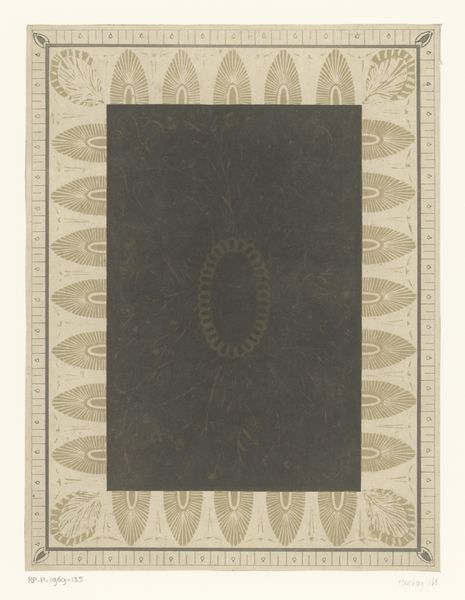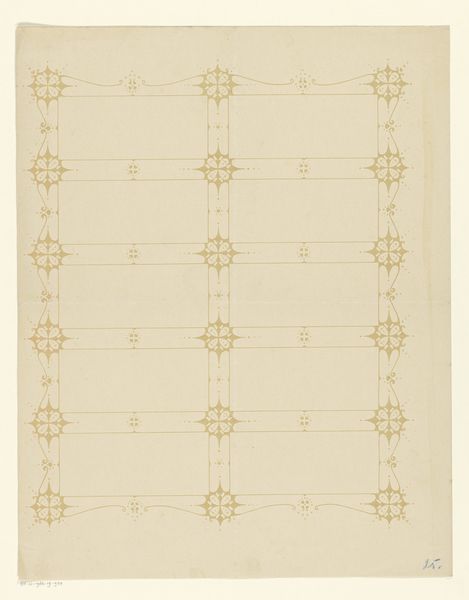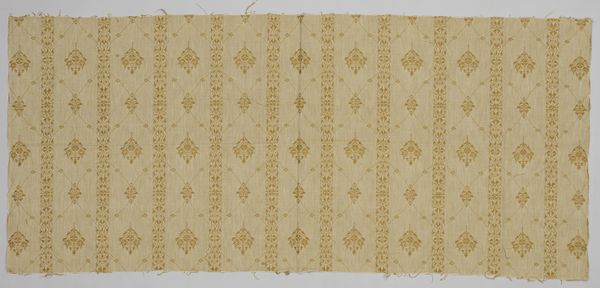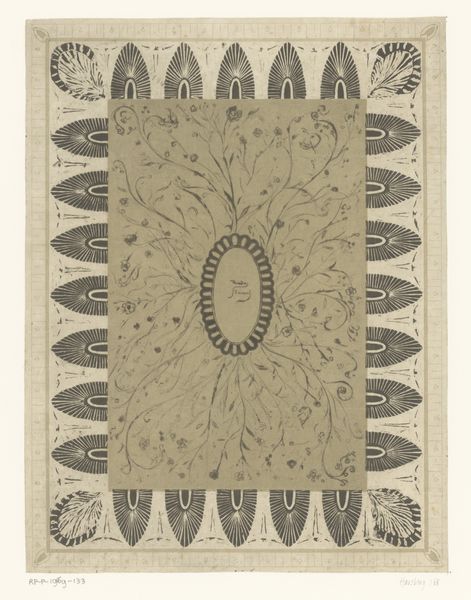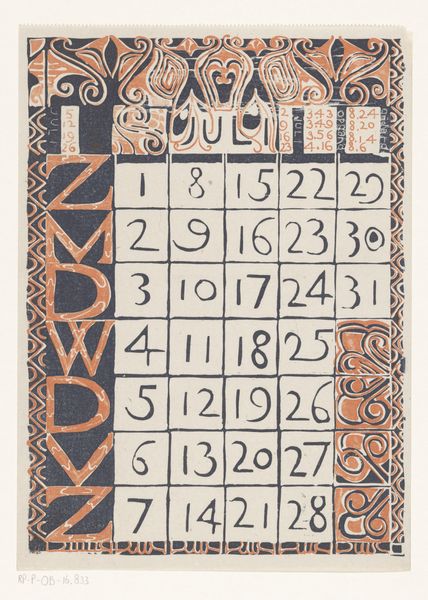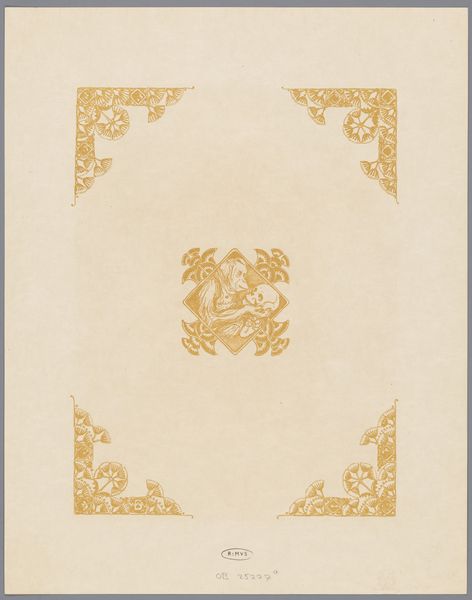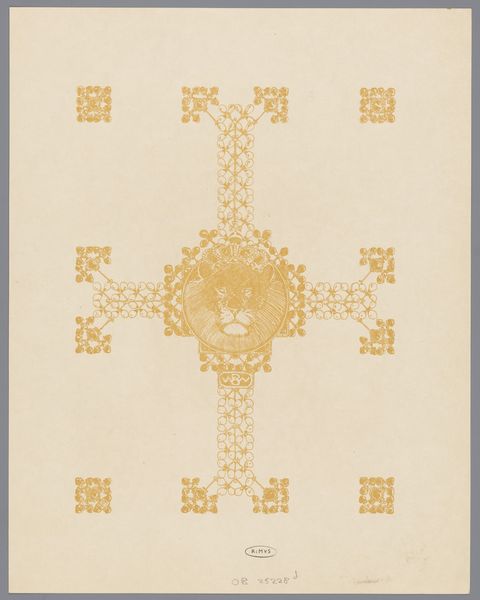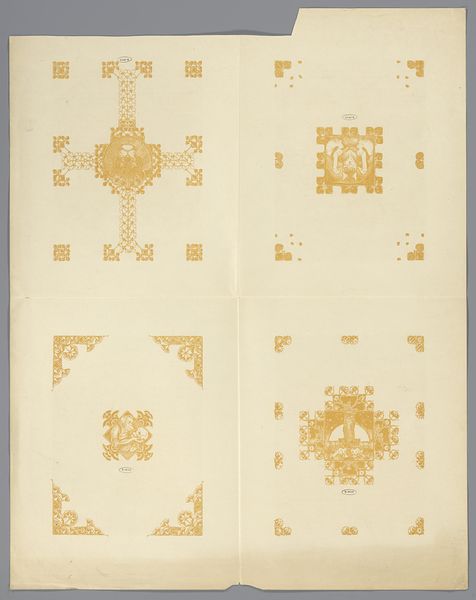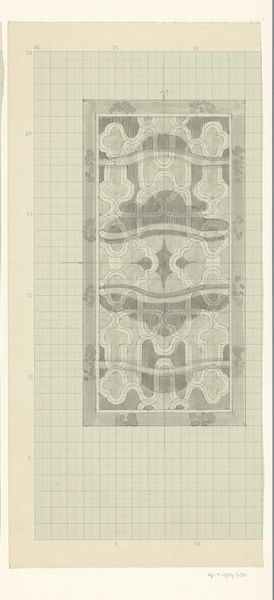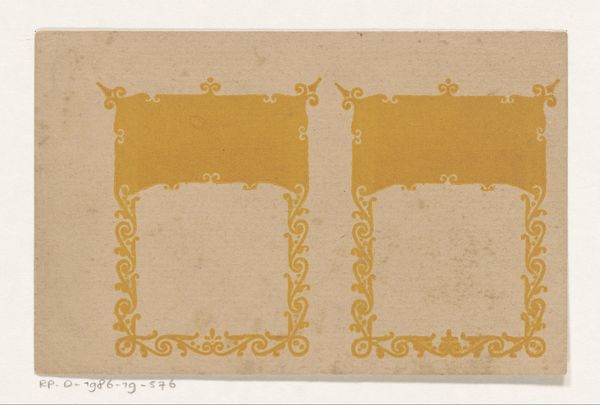
#
natural stone pattern
#
art-nouveau
# print
#
pattern background
#
pattern design
#
repetitive shape and pattern
#
organic pattern
#
geometric
#
repetition of pattern
#
vertical pattern
#
regular pattern
#
pattern repetition
#
decorative-art
#
layered pattern
Copyright: Rijks Museum: Open Domain
Curator: This is a print by Julie de Graag, likely created between 1878 and 1924. It resides in the Rijksmuseum. It has such strong art nouveau decorative elements! Editor: My first impression is its soothing repetition; the color palette is so restrained, almost calming. The grid-like pattern and organic flourishes work surprisingly well. Curator: Indeed! Graag's embrace of pattern and design aligns her with the broader Arts and Crafts movement. We should look at how this aesthetic, championed by figures like William Morris, sought to challenge the rigid hierarchy separating fine art from craft, reclaiming a sense of beauty and quality in everyday design. Editor: Right, and it feels relevant to question its intended purpose, considering how the labor of printmaking and the material quality might contrast the supposed ‘frivolity’ of purely decorative work. Do we know its social role back then? Curator: It is assumed it served as a calendar design, making something typically functional into a piece of decorative art that circulated in people’s homes or businesses. We see echoes of Japanese woodblock prints, particularly in her simplification of forms and the flatness of the image. This really demonstrates the influence of broader aesthetic trends during that period. Editor: I find myself thinking about the original block. The hand labor involved and the repetitive printing and the physical work invested in making such a regulated yet decorative piece. Also, what about the consumer culture during its distribution and how audiences engage with it back then? Curator: I agree! The original printing process, whether woodcut or linocut, required incredible skill and meticulous execution. While mass production might cheapen certain aspects of art, the human hand and mind guided it. I believe the artwork reflects a changing world seeking to fuse mass culture and individualistic expression. Editor: Yes, and beyond any social meanings, I find beauty in the intersections between its practical value, decorative appeal, and materiality. I see handwork intersecting with broader mechanized culture in unexpected ways. Curator: Absolutely! It offers insight into the evolving definition of art and the socio-cultural influences which determined taste in that era. Editor: A beautiful reflection on use and aesthetics!
Comments
No comments
Be the first to comment and join the conversation on the ultimate creative platform.
